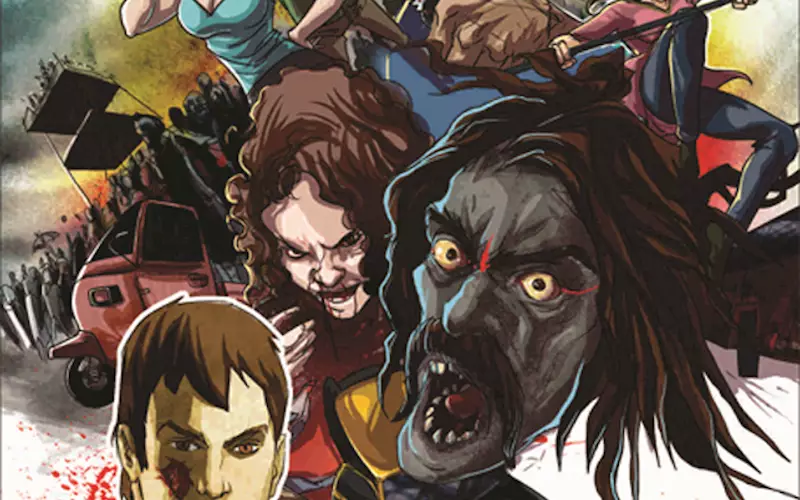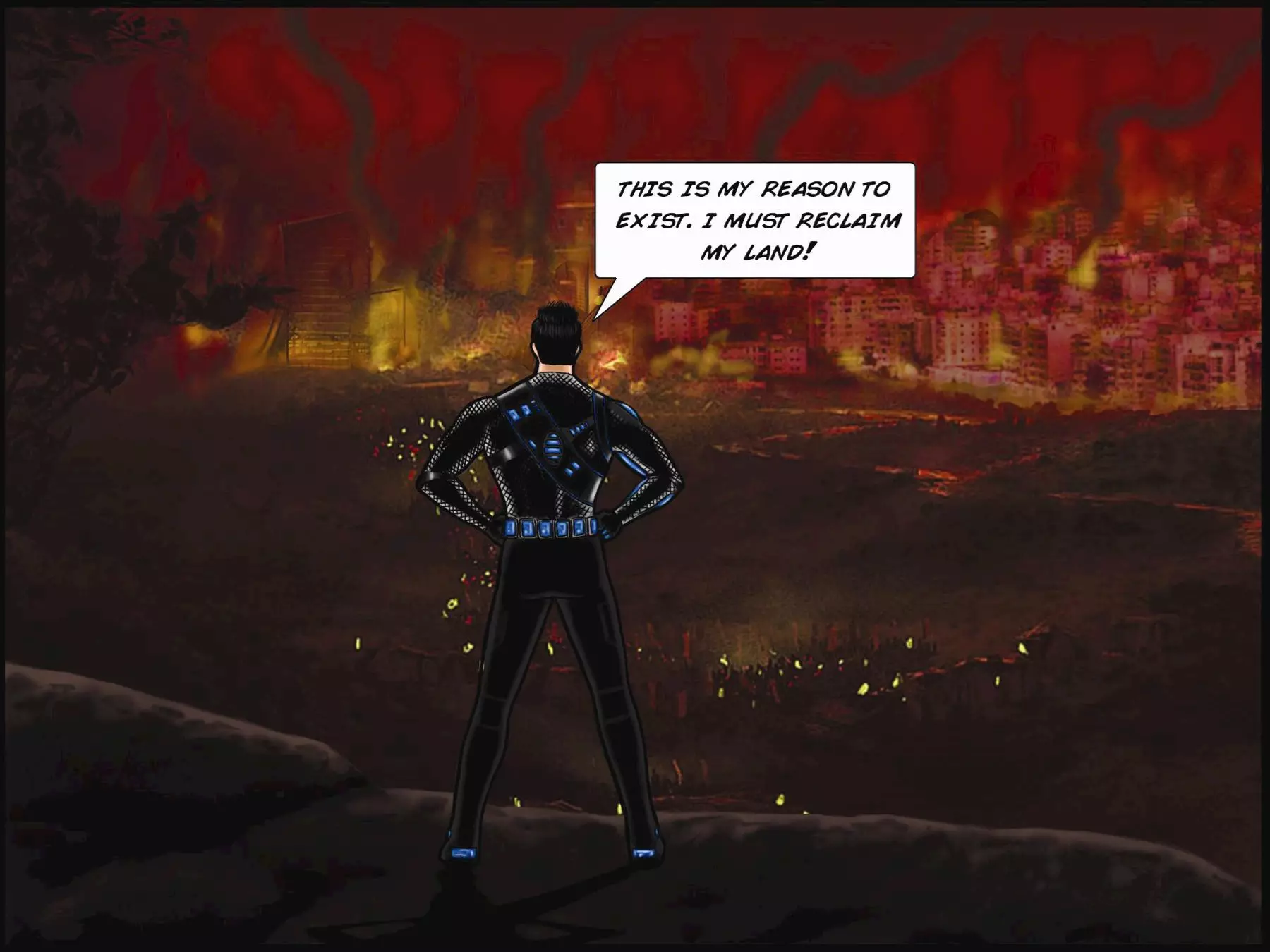Lights and Action with Graphic Novels in India
The PrintWeek India team takes a look at the burgeoning market for comic book publishing
12 Sep 2012 | By PrintWeek India
The special agent, Tiger, assigned with the task is surprised when he is told that if the stealth programme to regain control over the cargo ship fails, the vessel needs to be destroyed. Not afraid of the suicide mission and in display of all his quirks –nonchalance, quirky sense of humour that is not lost in stressful situations and his near-obsession for a steaming cup of coffee – Tiger rescues the ship. He then realises that it is carrying as cargo a nuclear bomb and the hijackers are not mere sea pirates, but terrorists.
Soon followed Farhan Akhtar’s Don: The Origin, published by Om Books International, lends a back story to the character Don from his remake of the 1978 classic by the same name. The Jungfrau Encounter, based on Saif Ali Khan’s spy character in Agent Vinod, came in March this year with Tata’s publishing arm Westland. iRock, the producers of Abhay Deol’s ambitious under-production zombie movie Shaadi of the Dead, also launched Zombie Talkies: Bloodfest in Bollywood, which has been published by Pop Culture Publishing (PCP). Prakash Jha too, intends to launch a series based on his upcoming film Chakravyuh.
Similarly, PCP came on board because the film Shaadi of the Dead in itself is an attempt to defy norms and set new trends. “A zombie movie, it is a quirky project that hopes to stand out in the industry driven by stars. So we were more than happy to associate ourselves with the film and create an original series for the film,” says an official from PCP, which publishes indie graphic novels and comic books, such as Munkeeman and Adventures of Timpa.
Similarly, Ra.One’s nine-part online series, as countdown to the film’s release, narrated superhero G.One’s back story. Also, Zombie Talkies takes off from the real film’s shoot in Agra but the twist in the tale comes when the set itself comes under zombie attack.
“The audience gets hooked only after they have read multiple stories and are assured quality storytelling, which is what Yomics intends to do.” Jatin Varma, founder of Comic Con, a nationwide platform to promote graphic novels and comic books that was used to launch both Don: The Origin (2011) and Zombie Talkies (2012), seconds Saxena. “The graphic novel genre in itself is in nascent stages. It needs all the possible support from people whose voices will be heard. If filmmakers want to use it as a tool to promote their films and at the same time create quality content, there is no harm. Let’s bring it on.”
|
The iconic Indian graphic comic book Tinkle has just published their 600th edition. With one eye on the future, ACK-Media – the publishers of the comics have grand plans for their comic books Tinkle and Amar Chitra Katha. ACK Media is planning and working towards content creation that lends itself seamlessly across media. To find out more Mihir Joshi of PrintWeek India talked to Rajani Thindiath, editor, Tinkle ...
Tinkle’s 600th edition is published. What are your views on this development and what are the future plans for Tinkle?
It’s a proud moment for all of us—those fantastic writers and artists who helped create Tinkle and the team working on it now. It was a great opportunity to go out and have a blast, in terms of content, art and design.
The 600th edition was thus bigger than any other Tinkle magazine so far. And nicer! There was a massive market activation to push this once in a generation occurrence and we have reasons to believe that we achieved a huge growth in customer acquisition with this single issue. As for the future, Tinkle is appearing in a bigger size with newer content appearing every few months, designed to be interactive. There are also new characters appearing, covering almost every genre from action and comedy to thrillers and family stories. Tinkle will also be featuring its popular characters more regularly.
What according to you is the scope for graphic novels in India?
So far, our understanding of comics was majorly restricted to humour. Few of us realise that it is one of the most effective forms of communication. A page in a graphic novel conveys what reams of text do, sometimes with greater impact. It is a great medium that falls somewhere between books and movies, bringing alive what is essentially static. Graphic novels are a fantastic option for all those who love art and a good story. If we can come out with as fantastic stuff as we have seen on international levels, this should be a field to watch out for.
Do you think that folklore inspired comic books like Amar Chitra Katha are a thing of the past and are we moving towards a more present-day based comic books?
Not by any means! I have letters from readers asking for more folktales in Tinkle. I can just imagine the flood of mails Reena Puri (editor of Amar Chitra Katha) must be getting. Modern storytelling, for all its advances, has a kind of sophisticated uniformity. Not so with folktales, which by their diversity serve as great introductions to cultures, known and unknown.
What are your views on the digitisation of comic books?
Provided that our content is great and we reach our readers, whether it is books, tablets or mobiles, the form is fairly immaterial. Considering the recent technological advances, digitisation is a natural progression for most publication houses.
Do you believe that the market for the graphic novel industry is increasing? What are your views on the new generation comic books which are heavily influenced by western comic industry?
I don’t believe there is any one particular dominating influence on our comics. Over the next few years, we’ll be seeing all kinds of experimentation. We’ll be dipping into our classics, working on parodies, learning from the established comics industries from Europe, Japan and the US, and eventually coming up with path-breaking stuff ourselves. When we look back, we’ll see this as one of our best phases—a time to make mistakes and learn from them. What matters is establishing comics as an art form in its own right and using it like any other art to communicate and explore new ideas.
One character that you personally like from the army of comic characters under ACK-Media?
In terms of characters, I love the Defective Detectives from Tinkle, their enthusiasm, their absurdity. I’ve loved all tales of mythology from Amar Chitra Katha but I thought Jim Corbett, the recent title by Tripti Nainwal and Ghanshyam Bochgeri was particularly good. I’m also proud that Sons of Ram (releasing on 2 November, 2012) is an ACK Animation product.
The other aspect of ACK-Media is the Art of ACK. Apart from characters, some iconic art on the Amar Chitra Katha covers have endeared several historical or mythological persons to millions of Indians. I’m sure millions of Indians will recollect the memorable covers of Amar Chitra Kathas of Birbal, Raman of Tenali, Abhimanyu, Rana Pratap and Meerabai… to name a few!
Who are your target readers? And more importantly, what steps have you taken to ensure sustainability and growth?
Our core readers are between eight and 14 but Tinkle is read by all family members, so the target readership is quite fluid. As for increasing Tinkle’s popularity, I am following Uncle Pai’s (Anant Pai is the founder of Tinkle) guidelines. We have been going all out to interact with as many readers as possible and making them a part of Tinkle. As mentioned earlier, different initiatives, such as making sure new content appears periodically or introducing new characters, have been taken, all designed with our motto ‘where learning meets fun’ in mind. More recently, we published Tinkle 600 as a collector’s edition. Activities associated with it such as the Tinkle Tickles Laugh-a-thon (to create a laughter record), are aimed at connecting with our readers.
|

















 See All
See All